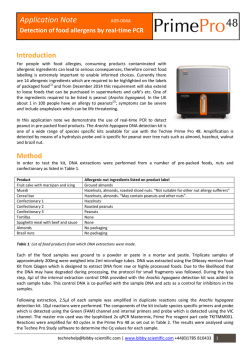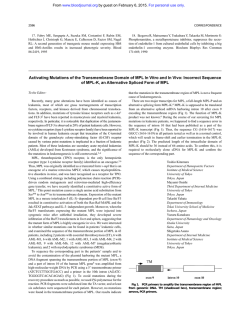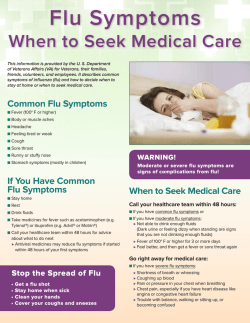
Download [ PDF ] - journal of evolution of medical and dental sciences
DOI: 10.14260/jemds/2015/200 ORIGINAL ARTICLE IS SALMONELLA TYPHI THE CAUSE OF ENTERIC PERFORATION? A CLINICAL CUM MICROBIOLOGICAL STUDY INCLUDING TISSUE CULTURE AND PCR TO ASCERTAIN THE AETIOLOGY OF ENTERIC PERFORATION Anil K. Singh1, Nishita Sinha2, Sanjeev Kumar3, Krishna Gopal4, Pradeep Jaisawal5, S. K. Jha6, Prem Prakash7, Vibhuti Bhushan8 HOW TO CITE THIS ARTICLE: Anil K. Singh, Nishita Sinha, Sanjeev Kumar, Krishna Gopal, Pradeep Jaisawal, S. K. Jha, Prem Prakash, Vibhuti Bhushan. “Is Salmonella Typhi the Cause of Enteric Perforation? A Clinical cum Microbiological Study including Tissue Culture and PCR to Ascertain the Aetiology of Enteric Perforation”. Journal of Evolution of Medical and Dental Sciences 2015; Vol. 4, Issue 09, January 29; Page: 1423-1427, DOI: 10.14260/jemds/2015/200 ABSTRACT: PURPOSE: To determine the role of enteric fever in ileal perforations. METHODS: A prospective cohort of 44 patients of ileal perforation was subjected to clinical examination and investigations like blood, ulcer edge biopsy, stool from the site of perforation and polymerase chain reaction (PCR) were subjected to culture to determine the predominant aerobic bacterial. RESULTS: Mortality was 22.7%. Highest isolation rate was seen in PCR (34.1%) followed by ulcer edge (25%) culture. CONCLUSIONS: Enteric fever organisms are not the predominant causative agents of ileal perforations. Culture of ulcer edge biopsy and PCR is crucial for aetiological diagnosis. KEYWORDS: Enteric, ileal perforations, typhi. INTRODUCTION: Enteric fever is endemic in developing countries, including India. The incidence of intestinal perforation in cases of typhoid fever is about 2-3%.1 Widal test, although done routinely, has been found to be non-specific and difficult to interpret in areas where typhoid fever is endemic.2 Diagnosis of typhoid is rarely confirmed and in the majority of cases of enteric perforation, only a conjectural diagnosis is based on the circumstantial evidence of terminal ileal, antimesenteric perforation in an adult running fever for two weeks. In India, typhoid is seen in 8-50% cases of gastrointestinal perforation. There is paucity of information from India on aetiology, morbidity and mortality in this regard.3, 4 The proximal intestinal perforations are more common in India as compared to the distal intestinal perforations, which are more frequent in developed countries. Site and aetiological factors of perforations also show geographical variations.3 Therefore, there is a need to study this problem, especially in a typhoid-endemic country like India, where the burden of ileal perforations is high and there is convincing evidence that surgical intervention and definitive antibiotic therapy can decrease mortality.5, 6, 7 This study was undertaken to determine the aetiological diagnosis and appropriate therapeutic approach of ileal perforation. MATERIALS AND METHOD: The present study was conducted in PMCH and IGIMS of Patna, India. A prospective cohort of 44 patients of ileal perforations was included in the study from August 2005 to January 2014. All patients underwent a thorough clinical examination and relevant investigations. Blood for culture was collected prior to initiation of antibiotics. Pre-operative resuscitation included intravenous fluids, intravenous antibiotics and correction of electrolyte derangement etc., as indicated. Adequate urine output, normal serum electrolytes and urea were included as indicators of adequate resuscitation. Exploratory laparotomy was performed in all patients after adequate resuscitation, by a midline incision. The operative findings were recorded and the amount of pus and faecal material from the site of perforation were estimated and drained after collecting a sample for J of Evolution of Med and Dent Sci/ eISSN- 2278-4802, pISSN- 2278-4748/ Vol. 4/ Issue 09/Jan 29, 2015 Page 1423 DOI: 10.14260/jemds/2015/200 ORIGINAL ARTICLE culture. Edge of the perforation was excised and sent to microbiology laboratory in normal saline. All samples were processed as per standard procedures. Appropriate surgery was performed. The peritoneal cavity was lavaged thoroughly with 2-3 L of normal saline. Drains were placed in the right paracolic gutter and the pelvic cavity. Patients less than 12 years of age, those with gastric, duodenal, appendicular or colonic perforations and those who died before resuscitation and surgery were excluded from the study. RESULTS: Enteric fever organisms are not the predominant causative agents of ileal perforations. Out of 146 non-traumatic gastrointestinal perforations 44 were terminal ileal perforations, out of which only 15 were due to Salmonella typhi (S. Typhi). There were 34(77.3%) males and 10(22.7%) females. Their age ranged from 9 to 62 years but maximum patients were found in age group of 21-30 years. All the patients presented with abdominal pain and most of the patients (n=41) presented with fever. Seven patients (14.9%) required ICU admission in the post-operative period. One patient died during operation, 4 died within a week, 6 died due to complications like wound infection (52.2%), wound dehiscence (18.2%), faecal fistula (9%), toxaemia (13.6%) and residual abscess (6.8%). Blood culture was positive in 5(31.3%) patients. Ulcer edge was positive in 11(73.3%) patients. Stool culture from the site of perforation was positive in 4(26.6%). PCR for S. Typhi was positive in 15 out of 44 patients with ileal perforation. Table 1 shows symptoms, sign and investigations for identification of ileal perforation with S. Typhi. Parameters Numbers (n=44) Number of terminal ileal perforation 44 Sex Male 34 Female 10 Signs and symptoms Abdominal pain 44 Fever 41 Abdominal guarding 41 Altered bowel habits 44 Tachycardia (pulse>110/min) 23 Hypotension (sys. BP<100 mm of Hg) 23 Number of perforation (one) 36 Bowel sound absent 41 Investigations Pneumoperitoneum on chest x-ray 25 Air fluid level on abdominal x-ray 13 Hb (< 10 gm/dL) 29 Widal test 8 PCR 15 Blood culture 5 Stool culture 4 Ulcer edge culture 11 Table 1: Preoperative data J of Evolution of Med and Dent Sci/ eISSN- 2278-4802, pISSN- 2278-4748/ Vol. 4/ Issue 09/Jan 29, 2015 Page 1424 DOI: 10.14260/jemds/2015/200 ORIGINAL ARTICLE DISCUSSION: The mortality rate from ileal perforations remains high in developing countries, despite improvement in critical care and timely surgical intervention.4 This is attributed to delayed presentation of the patient owing to inappropriate prescription, over-the-counter availability of antimicrobials and poor infection control practices. Patients in this study were young adult and males. Similar findings were also seen in prior reports.3, 4, 8 These occurred most frequently during the early 2nd or even the 1st or 3rd week of illness.9 All patients with enteric perforation presented with abdominal pain and 41 out of 44 typhoid perforation cases presented with fever. Classically, patients of enteric fever are reported to present with step-ladder pattern of fever. We did not find so. There may be various factors and antipyretics. The clinician therefore, should not entirely depend upon the classical history to diagnose enteric fever and perforation. Traditionally, the diagnosis of enteric fever can only be confirmed by isolation of the Salmonella typhi bacteria from blood, or some other body fluid, like stool. Isolation rate is very low from various cultures.10, 11, 12 In the present study, Salmonella typhi could be isolated by standard culture technique in 6 patients by blood culture and in only 4 patients with the help of stool culture taken from the site of perforation. In a prior study, blood culture has been found to detect serotype Typhi in 44-83% of patients with typhoid fever; 2 however, the number of organisms, stage of the disease, type of culture medium used, incubation period and presence of inhibitors in blood, limit its positivity. Widal test was positive among 8 patients of ileal perforation. Moreover, in an endemic area, high prevalence of antibody titres and amnestic response seen on any febrile illness limit the usefulness of widal test.13This may be most probably due to rampant use of antibiotics during prehospital treatment. Ulcer edge cultures were positive for S. Typhi among 11 patients only. In our study, we also relied on the PCR confirmation for enteric aetiology of the ileal perforation. Only 15 out of 44 ileal perforations were typhoid perforation cases which were confirmed by PCR. In our study, confirmation of typhoid ileal perforation was done with the help of PCR, ulcer edge culture, and stool culture from the site of perforation, widal test, blood culture and clinical features. The mortality and morbidity in terminal ileal perforation is very high. In our study, out of 44 patients 10(22.7%) died due to complications. One patient died on the table. Our result was in accordance to other studies as they also stated high mortality rate.14, 15 To conclude, as it is difficult to interpret in an endemic area, where high prevalence of antibody titre is present even in a healthy individual; high index of suspicion as well as ulcer edge culture and PCR assay must be used for etiological diagnosis. Mortality and morbidity continues to be significant in cases of typhoid perforation inspite of advances made in the understanding the medical treatment and availability of better chemotherapeutic drugs. This is probably due to the inherent lowered immunity in enteric infection, low general condition at the time of presentation and treatment by quack medical practioners who in indiscriminately use corticosteroids, prior to referral to a tertiary care centre. There is a need for public as well as medical professional awareness regarding the seriousness of this potentially lethal surgical emergency and timely referral to an appropriate higher centre for urgent and adequate treatment. J of Evolution of Med and Dent Sci/ eISSN- 2278-4802, pISSN- 2278-4748/ Vol. 4/ Issue 09/Jan 29, 2015 Page 1425 DOI: 10.14260/jemds/2015/200 ORIGINAL ARTICLE REFERENCES: 1. Meier DE, Imediegwu OO, Tarpley JL. Perforated typhoid enteritis: Operative experience with 108 cases. Am J Surg 1989; 157: 423-7. 2. Chaudhary R, Shanker S, Nisar N, Dey AB. Recent advances in the diagnosis of enteric fever. Trop Gastroenterol 1995; 16: 8-12. 3. Agarwal S, Gera N. Tuberculosis: An underestimated cause of ileal perforation. J Indian Med Assoc 1996; 94: 341-52 4. Jhobta RS, Attri AK, Kaushik R, Sharma R, Jhobta A. Spectrum of perforation peritonitis in India: Review of 504 consecutive cases. World J Emerg Surg 2006; 1: 26. 5. Mosdell DM, Morris DM, Voltura A. Antibiotic treatment for surgical peritonitis. Ann Surg 1991; 214: 543-9. 6. Falagas ME, Barefoot L, GrifÞ th J, Ruthazar R, Snydman DR. Risk factors leading to clinical failure in the treatment of intraabdominal of skin/soft tissue infection. Eur J Ciln Microbiol Infect Dis 1996; 15: 913-21. 7. Basten JPV, Stockenbrugger R. Typhoid perforation: A review of literature since 1960. Trop Geogr Med 1994; 46: 336-9. 8. Sharma L, Gupta S, Soni AS, Sikora SS, Kapoor V. Generalized peritonitis in India: The Tropical spectrum. Jpn J Surg 1991; 21: 272-7. 9. Singh BU et al. Comparative study of operative procedure in typhoid perforation. Indian J Sirg. 2003; 65(2): 172-177. 10. Meier DE, Imediegwu OO, Tarpley JL. Perforated typhoid enteritis: operative experience with 108 cases. Am J Surg. 1989; 157: 423-7. 11. Ekenze SO, Okoro PE, Amah CC, et al. Typhoid ileal perforation: analysis of morbidity and mortality in 89 children. Niger J Clin Pract. 2008 Mar; 11(1): 58-62. 12. Cammie FL, Miller SI. Salmonellosis. Harrison’s Principles of Internal Medicine. 2004; 16: 8380-00. 13. Levine MM, Grados O, Gilman RH, Woodwards WE, Solis- Plaza R, Waldman W. Diagnostic value of the widal test in areas endemic for typhoid fever. Am J Trop Med Hyg 1978; 27: 795800. 14. Afzal Khan et al. Typhoid enteric perforation. J. Ayub Med Coll Abottabad, 2000; 12(1): 49-52. 15. Adesunkanmi AR, Ajao OG. The prognostic factors in typhoid ileal perforation. J R Coll Surg Edin., 1998; 42(6): 395-9. J of Evolution of Med and Dent Sci/ eISSN- 2278-4802, pISSN- 2278-4748/ Vol. 4/ Issue 09/Jan 29, 2015 Page 1426 DOI: 10.14260/jemds/2015/200 ORIGINAL ARTICLE AUTHORS: 1. Anil K. Singh 2. Nishita Sinha 3. Sanjeev Kumar 4. Krishna Gopal 5. Pradeep Jaisawal 6. S. K. Jha 7. Prem Prakash 8. Vibhuti Bhushan PARTICULARS OF CONTRIBUTORS: 1. Senior Resident, Department of General Surgery, Indira Gandhi Institute of Medical Sciences, Patna, Bihar, India. 2. Junior Resident, Department of Biochemistry, RMCH, Bareilly. 3. Additional Professor, Department of Anaesthesiology and Critical Care Medicine, Indira Gandhi Institute of Medical Sciences, Patna, Bihar, India. 4. Associate Professor, Department of General Surgery, Indira Gandhi Institute of Medical Sciences, Patna, Bihar, India. 5. Assistant Professor, Department of General Surgery, Indira Gandhi Institute of Medical Sciences, Patna, Bihar, India. 6. 7. 8. Professor and Head, Department of General Surgery, Indira Gandhi Institute of Medical Sciences, Patna, Bihar, India. Assistant Professor, Department of General Surgery, Indira Gandhi Institute of Medical Sciences, Patna, Bihar, India. Associate Professor, Department of General Surgery, Indira Gandhi Institute of Medical Sciences, Patna, Bihar, India. NAME ADDRESS EMAIL ID OF THE CORRESPONDING AUTHOR: Dr. Anil K. Singh, C/o. Mr. Jayendra Sinha, Opposite NTPC Phase-I, Ashiyana Nagar, Patna – 8000025, Bihar, India. E-mail: [email protected] Date of Submission: 06/01/2015. Date of Peer Review: 07/01/2015. Date of Acceptance: 19/01/2015. Date of Publishing: 27/01/2015. J of Evolution of Med and Dent Sci/ eISSN- 2278-4802, pISSN- 2278-4748/ Vol. 4/ Issue 09/Jan 29, 2015 Page 1427
© Copyright 2025
![Download [ PDF ] - journal of evidence based medicine and](http://s2.esdocs.com/store/data/000499809_1-c6b1e3dfacc473ca04f6534c5a5c7150-250x500.png)

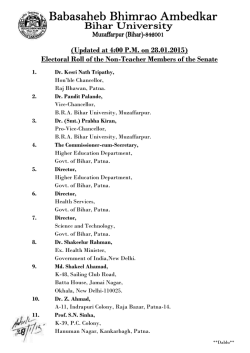
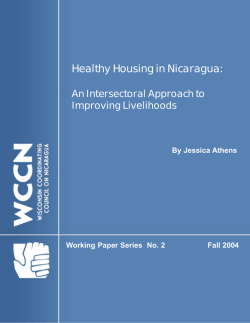
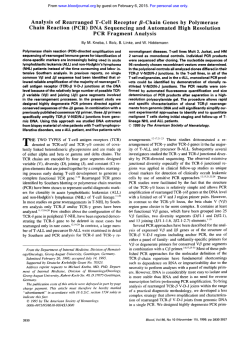
![Download [ PDF ] - journal of evolution of medical and dental sciences](http://s2.esdocs.com/store/data/000508178_1-5fa9fab616d194a1e14c87421b98805e-250x500.png)
